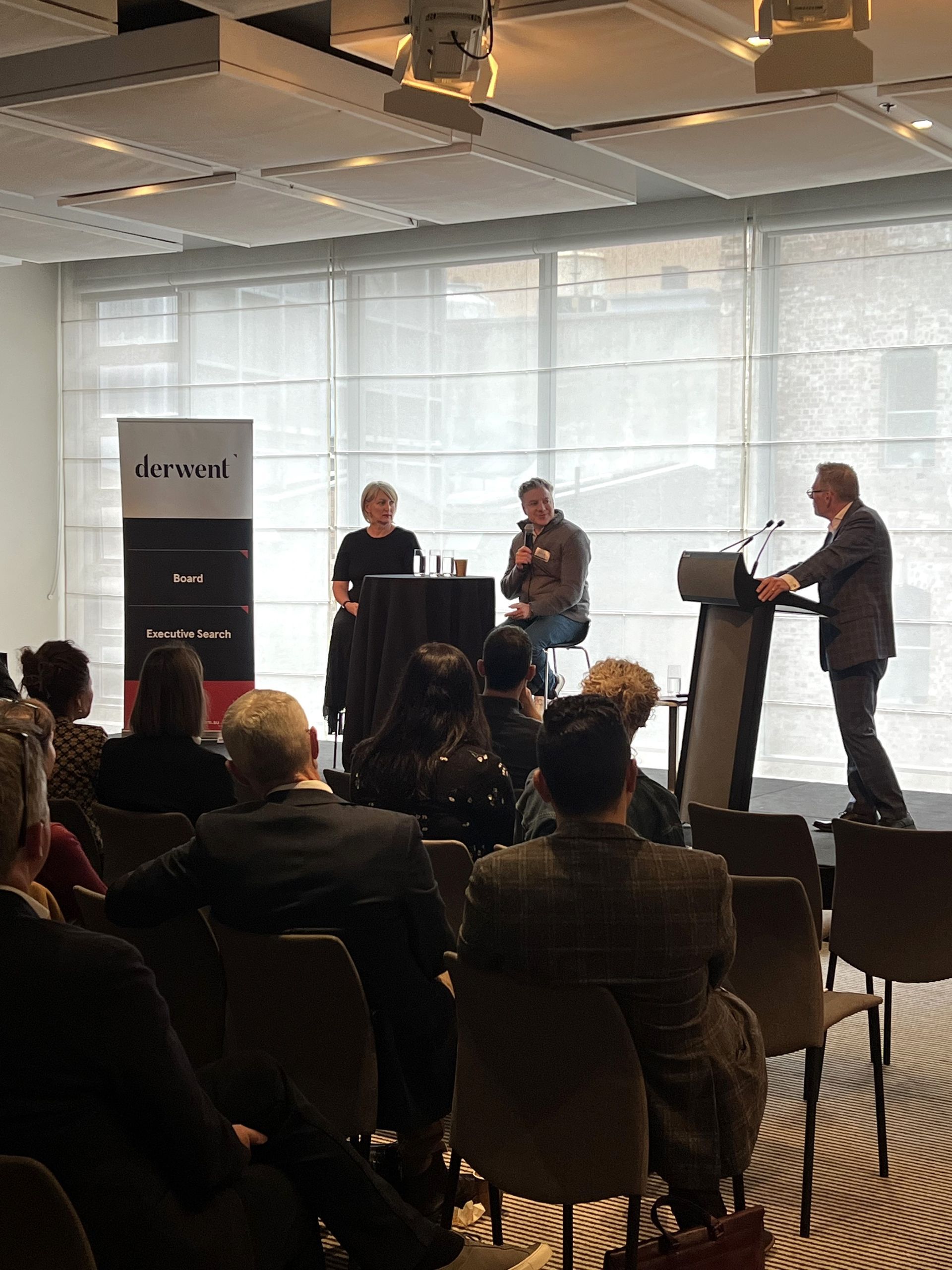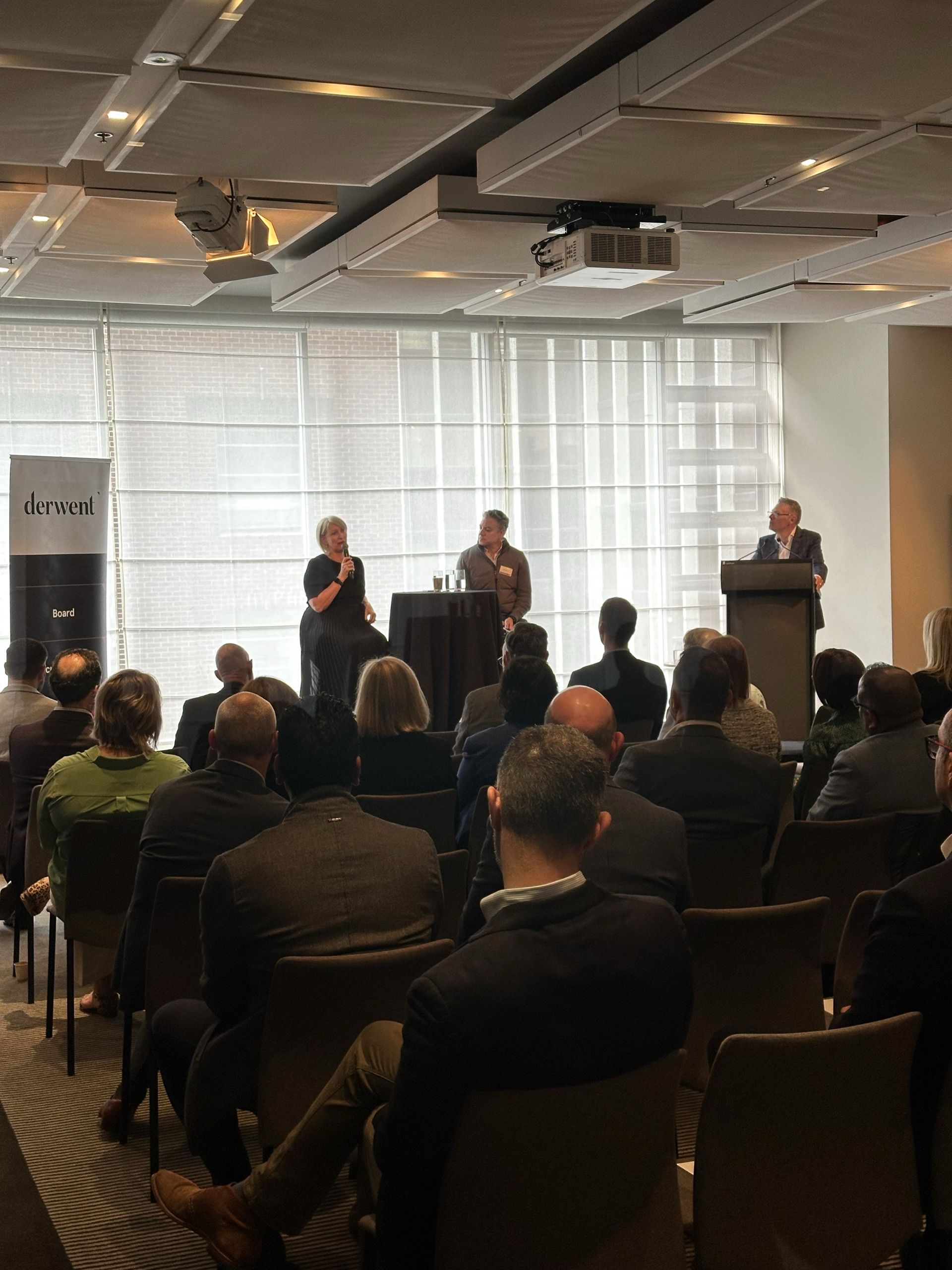News
“Digital Growth – It’s a People Thing” with Emma Hogan & Richard Joffe.
Derwent had the pleasure of hosting an executive forum “Digital Growth – It’s a People Thing” in Sydney with guest speakers Emma Hogan & Richard Joffe.
Organisations that succeed in driving growth and transformation are the ones that get the people strategies right. There are critical people elements to consider when leading growth and a more sustainable digital future – these include developing the right operating model, organisational structure, aligning the right capability to the structure, and establishing optimal ways of working.
Facilitated by Lindsay Every, Derwent’s Group Managing Partner and Digital Practice Lead, Emma and Richard shared their perspectives on some of the key success factors for teams and organisations to consider when developing and enabling digital capability.
Key takeaways from the discussion included:
- Great leaders will attract the best, which has a flow-down effect – it all starts with having the right people at the top.
- Digital strategies are truly the enabler to be more efficient and effective.
- Culture is critical – remove boundaries, allow people to test and fail, and let them do their best work.
- Clear KPI’s and the right mix of incentives are key to alignment – people will often do what gets rewarded.
Assessing the digital health of an organisation
- It’s important to firstly understand what technology is currently in place. What’s working effectively? Where is there overlap? How do we align digital and technology plans to the company goals.
- Get a sense of what digital means to an organisation and the people in different parts of the business.
- The sophistication of an organisation’s data and analytics capability is often a great measure of its digital maturity.
- Data drives everything, rather than basing decisions just on feelings or hunches, take the temperature of a team on how they use data.
Prioritising areas for digitisation
- Digitisation is much more about enablement than automation. How do we improve service delivery? How to we deliver to customers who are expecting an anticipatory experience?
- The age and stage of a business play a key role in establishing priorities. It’s important to protect the core business while also progressing new opportunities to think differently, innovate and enable change.
- You have to be careful that innovation is not BAU. There should be urgency that a small section of an organisation is working to actively move the needle.
- Service-based industries can see significant improvements in areas such as marketing, customer service, supply chain etc.
- Review the decisions and investments you make in digital strategies. A recent BCG article highlighted that less than 40% of companies that have implemented AI or ML have seen any yield.
- Are their key opportunities or functional areas that are ripe for digitisation? For example, the use of Data Science, Analytics and AI has transformed modern day marketers and allowed them to deliver a level of hyper-personalisation that customers in today’s world now demand.
Creating a culture of digital innovation
- There is a constant tension between digital experimentation and achieving standard business goals.
- Whilst it’s important to remained disciplined on core priorities, you are able to achieve amazing things when removing boundaries and shifting the thinking about what’s possible when it comes to accelerating digital.
- A burning platform can change the psychology of how individuals frame the upside and downside. Turning “no’s” into “maybe’s” and positioning “what’s the loss of not doing something?”. People are neurologically wired to avoid losses, so you are able to shift the mindset to accept and grow from testing and failing.
- As an organisation grows, maintaining a culture of digital innovation can become increasingly hard. What people, processes and systems can be replicated as the business scales?
- Incentives and culture are inherently aligned. Individuals will behave and perform according to the goals and associated rewards of an organisation.
The people elements for success in digital transformation
- Talent drives digital. The top 10% of a workforce can drive the majority of digital outcomes. Attracting them to the organisation, providing autonomy, and setting them up for success is critical.
- The storytelling and framing of any digital projects or investments is very important. When done effectively, it can ensure buy in from employees and customers.
- You can constantly improve the organisational organism by bringing in people who can be the best at something. Leading talent have a flywheel effect.
Share this article
Recent Articles









